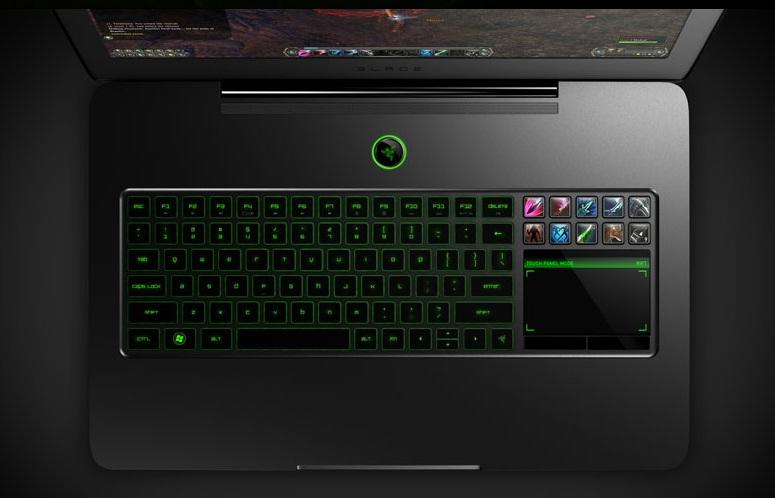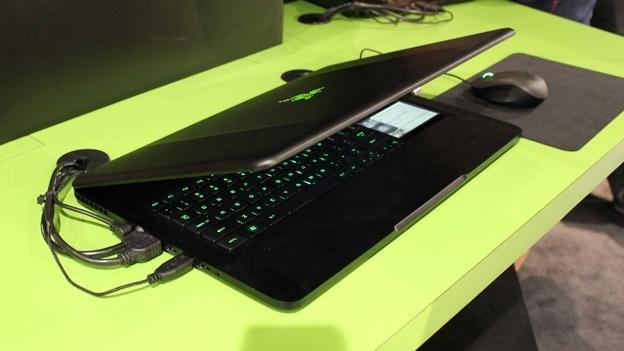
The site may be called PhoneDog, but for today we’re going to use our imagination a bit and think of the website as TechDog (or something along those lines) for now, because for today’s Buyer’s Guide we’re not talking about phones - we’re talking about computers! Specifically, we're talking about gaming computers.
If you’ve ever been curious about purchasing a PC gaming rig of your own, you’ve probably done a few searches already. It wasn’t too long ago that I was looking for a new computer of my own, and this time I decided to spring for a computer that is sufficient for both work and gaming. During my search, I’ve come across a lot of arguments when it comes to gaming PCs, some of which include: don’t buy a “gaming laptop”; don’t buy a pre-built gaming desktop, because you can build one for much cheaper; and, just to reiterate, don’t buy a gaming laptop. Being the rebel that I am, I went ahead and bought a “gaming” laptop, because a laptop is what I need for work and I just don’t have the cash to spring for both a laptop and a desktop. Compromises were made, but in the end I’m happy.
Despite the arguments you’ll see across the Internet and various forums, sometimes you would just rather buy something pre-built. The arguments hold some truth to them; when it comes to purchasing a gaming PC, you’re going to be able to build it (or have somebody build it) for a lot cheaper than it costs to buy a pre-built one. On the other hand, not everybody is as confident, patient, or as picky about how a gaming desktop (or laptop) costs or performs.
So, without further ado, here’s what I have come up with for my Buyer’s Guide for gaming laptops and desktops.

Okay, so with a budget anything, you’re likely going to be cutting corners and your gaming experience will probably reflect that. Fortunately, technology has come a long way, so you’re not going to suffer too much if you’re not that picky about having all of the bells and whistles with your games.
For a budget laptop, I went with the Lenovo IdeaPad y510p. Why? It’s the computer that I currently use on a daily basis. The laptop is designed to run games smoothly, and it’s been my experience so far that it’s been able to do so. I’m usually on the MMORPG side of things, but so far I’ve been able to run: The Elder Scrolls Online, Final Fantasy XIV: A Realm Reborn, Warframe, Goat Simulator (and yes, it’s surprisingly carefree), Hearthstone, and World of Warcraft on the highest settings with an average of 35-40 FPS.
The computer also fits well with my other needs like work. With a 1 TB hard drive, 24GB SSD, 8GB of RAM, 4th gen Haswell Intel Core i7 processor, and an NVIDIA GeForce GT755M graphics card, it really wasn’t a bad buy at $899. It was within my budget and had everything I really needed, and after a month of usage it has proved to serve me well thus far.
Desktop: iBuyPower Revolt (starting at $700 from Wal-Mart)
What I like about this iBuyPower Bundle is that you kind of, sort of get to build your own desktop here by picking and choosing what components you want while still being within a decent budget. Without changing too much about the original build, you can have a decent gaming rig for about $700. If you decide that you want more, you have the option to do so (with increased costs, of course). I also like that this computer ships with Windows 7, which works out better for desktop computing in my own personal opinion.
Of course, as previously mentioned, if you go the budget route you can’t realistically expect to always run the highest settings well - but so far I feel that I’ve been pretty lucky with my laptop.

More expensive than a budget gaming laptop, there are a couple of things about this Razer laptop that I really liked. Most importantly, it serves well as an actual, portable laptop. One of the things that I don’t really like about my Lenovo IdeaPad is that it’s big and it’s bulky. Like, really big and bulky. The Razer Blade, on the other hand, did a really nice job of making their laptop thin and lightweight, yet still managed to keep the power necessary for good gaming. This particular laptop is also known for having decent battery life, another thing that my IdeaPad isn’t exactly well-known for. If you’re looking for an attractive design, good performance, and portability, the Razer Blade is probably going to be your best bet.
Alienware is typically a very well-known and expensive brand, but when it comes to the X51 the price starts out pretty small. This desktop would actually probably fit in the budget category as well, but it also counts as an entry-level desktop; the pricing starts at $699, but there are plenty of additional options here that can make this compact desktop somewhat expensive as well as a rather powerful competitor.
A big benefit of this desktop is that it is rather small for a tower, so if you’re not interested in having a huge tower (or if you’re simply limited on space) this tower has the advantage of being compact with the option of having a high performance. I recommend the Alienware X51 for those who want the versatility of a desktop gaming PC and size convenience when it comes to a tower.

As much as I hate products that actually go with the name “The New [Enter Product Name Here]” I have to admit that The New Razer Blade has caught my attention more than once. With a quad HD display and keeping the same light and thin design as its predecessor, The New Razer Blade did a really nice job of keeping the important features that made it stand out from competitors while enhancing on the important features like graphics card, processor, and of course, the display. Normally I hook up my laptops to external displays when I game at home, but with The New Razer Blade it seems like the display on the laptop itself would serve just fine.
This is one of those examples where you simply get more for your money when you opt for a desktop. If you don’t have much use for a laptop and you really just want something designated for gamin, this CyberpowerPC is a nice buy at just under $1,600. For this price, you can pick up a desktop with a 3.5GHz Haswell Intel Core i7 processor, 16GB of RAM, 2TB of hard drive, a 3GB Nvidia GeForce GTX 780 graphics card, and it features liquid cooling. With these features, you shouldn’t have a problem running the latest titles with great performance.
Purchasing a gaming laptop or pre-built desktop may not be the ideal solution for power gamers that need to run the max settings at a budget price, but no matter what type of PC gamer you are, it’s good to know there are workable options on all ends of the spectrum.
PC gamers out there, what are you using? Did you purchase a pre-built computer, or did you build one yourself? Let us know what you’re gaming on in the comments below!